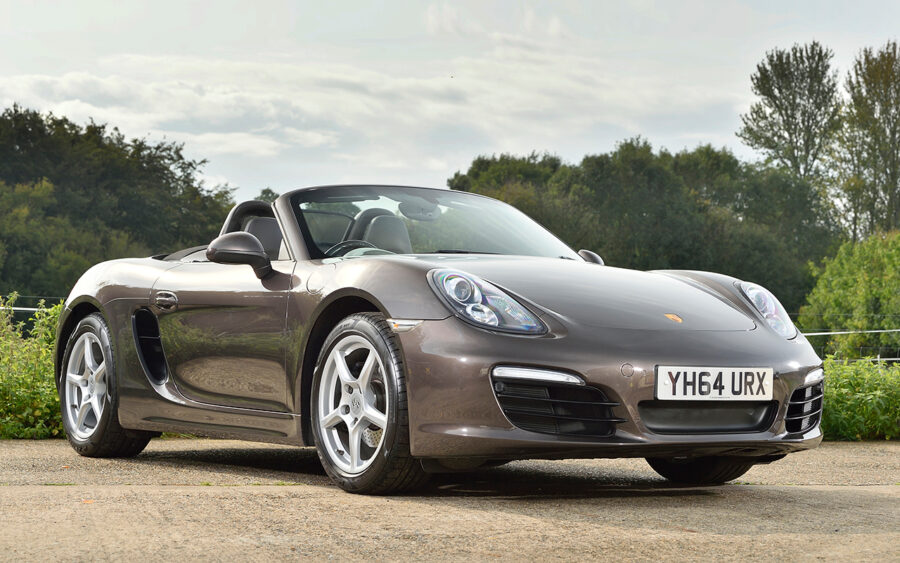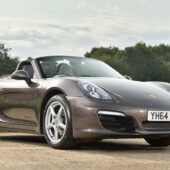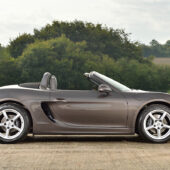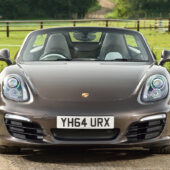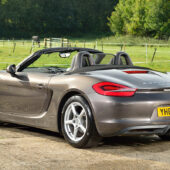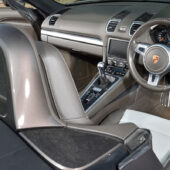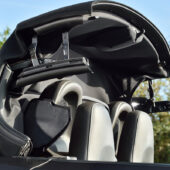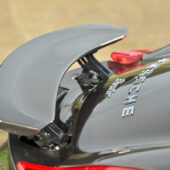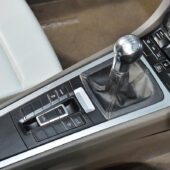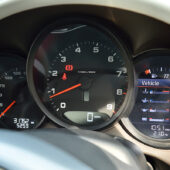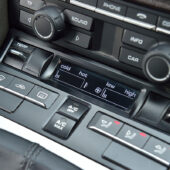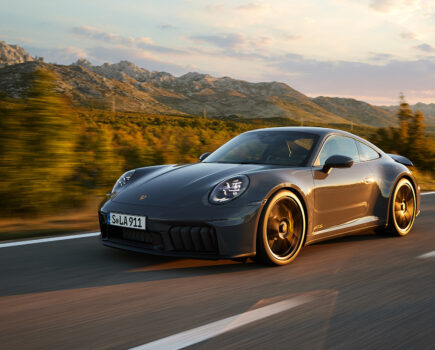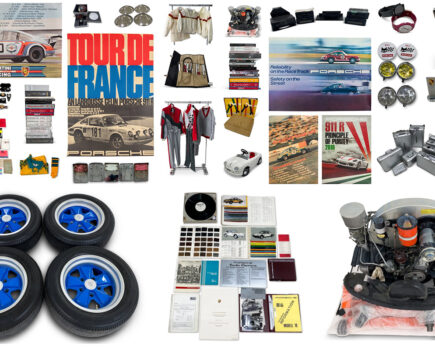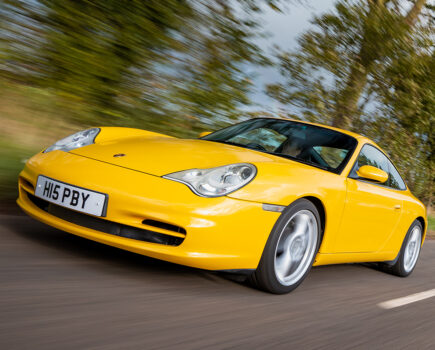Even the entry-level 981-generation Boxster is an outstanding sports car; it’s hard to find more fun for the money. Here’s how to buy one
Words: Dan Furr
By the time of the 981-generation Boxster’s arrival in 2012, Porsche‘s calculated merging of 911 and Boxster assembly lines as a means of radically cutting the cost of vehicle production and, crucially, helping the company to return to financial stability, was less pronounced. Some still saw the 986 and the 987 as much ‘lesser’ than the 911, but with the 981 (and certainly by the time of 981 Spyder and Cayman GT4 production), the Boxster finally branched out on its own.
When the 991 was released at the back end of 2011, 911 ownership was immediately opened up to a much wider audience, now encompassing those with little experience of time in charge of a sports car. Increased accessibility was chiefly down to a higher number of driver aids, including electronically assisted steering — where the 997 and earlier 911s would punish their driver for not concentrating, the 991 made allowances. Purists didn’t see this as a positive character trait, but it was one which saw the 991 find favour with a new sales audience and go on to become the most successful of all 911s.
The same electronic trickery, including an electronically linked parking brake, was carried over to the 981 Boxster, which inherited many of its looks from the 991 and the 918 plug-in hybrid supercar. A 4.6-inch full-colour TFT touchscreen sat proud in the centre of the dash, while a variety of sensors around the host Boxster relayed live operating information (engine temperature, oil temperature, oil pressure and many other measurements) back to the driver in a clear, concise manner.
Even the entry level 981 — as seen here — developed 261bhp and 207lb ft torque, more than enough for open-top blasts of leisurely fun in the sun along twisty B-roads and coastal highways, where the Boxster really comes into its own.
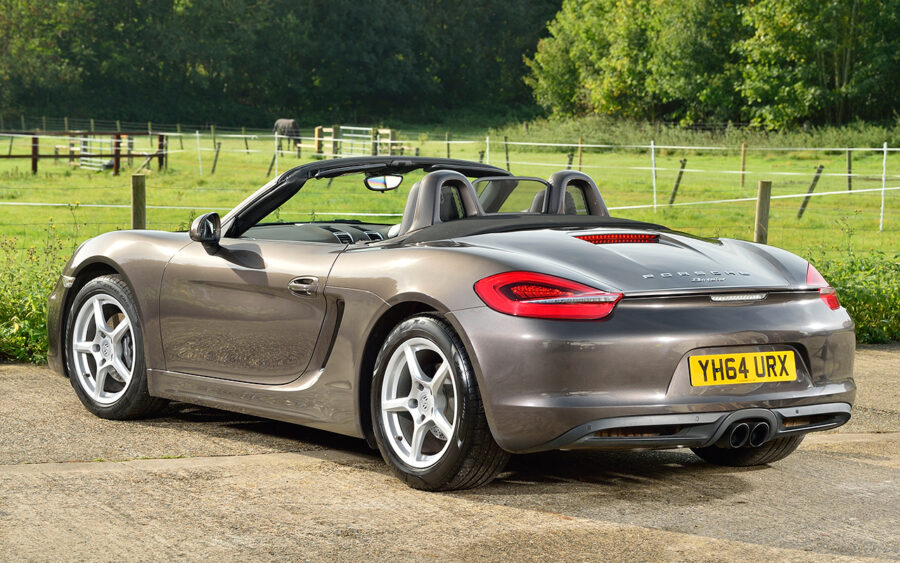
Bodywork
Where the 2.5-litre 986 Boxster was criticised for feeling underpowered, the 2.7-litre 981 (itself a Boxster starting point) feels altogether sprightly. Perhaps this is down to the car’s low body weight, its low drag coefficient or the fact its engine is, in fact, a scaled down version of the 3.4-litre lump found in the 981 Boxster S? Whatever the reason, the 981’s high-end trim, amazing overall specification and glorious looks make the beautiful brown (yes, brown cars can be beautiful) Boxster at PIE Performance feel anything but entry level. Surely there’s a catch?!
“Not really!” laughs PIE head honcho, Chris Lansbury. “By the time the 981 was ready for release, Porsche had refined and improved the Boxster concept to the point it was, in many respects, simplified.” The model’s retractable roof is a prime example of what he’s talking about. “Previous Boxsters featured a clam shell, which should sit flush when the roof is hidden within. If the part’s gear mechanism isn’t lubricated sufficiently, the clam top won’t shut properly and may sit proud. In contrast, the 981’s roof folds into the back of the cabin. It’s a much more straightforward and more efficient system with no problems to report.”
Even the oldest production 981 has seen less than a decade on the road. Combined with modern automotive manufacturing techniques and anti-rust measures put into place by Porsche, this means finding body corrosion anywhere on a 981 is currently unheard of. With this in mind, evidence of poor panel gaps, difference in shades of paint between sections of the car and any sign of body damage needs to be considered carefully — you may be looking at a Boxster that’s suffered an accident. All generations of Boxster have been big sellers, so don’t be afraid to walk away if you sense something is amiss — there are plenty of cars to choose from.
“The 981 is still new enough for problems associated with high mileage or major wear not to have presented themselves,” says Chris. “Rear lights can accumulate condensation,” he says, “but as a priority, make sure all of the car’s paintwork is free of damage, ensure the extendable rear wing works and check for tears or nicks in the roof, which can be expensive to replace.”
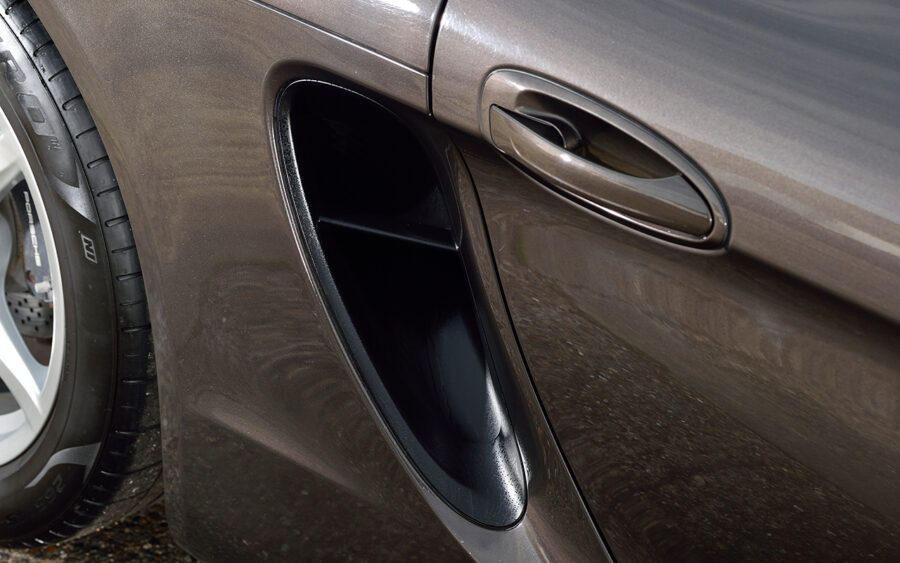
We popped along to the Suffolk headquarters of independent marque sales, maintenance, restoration and servicing specialist PIE Performance to spend time with the 2014 Anthracite Brown Metallic 981 seen in these pictures. Company boss, Chris Lansbury, talked us through the merits of modern Boxster ownership, as well as what to look out for if buying an entry level 981 in readiness for the fast-approaching summer season.
981 Boxster or no, the easiest way to correctly verify the identity of the car you’re looking at is to check its Vehicle Identification Number (VIN). Make sure it matches what’s printed on the V5. Elsewhere on the same document, you’ll see the car’s engine number. Make sure it checks out.
Spend a tenner at mycarcheck.com, where you can download a history report outlining any insurance claims, change of registration number, recorded mileage and whether there is any outstanding finance on the Boxster you’re looking at. You should also enter the vehicle’s details into the DVLA’s online MoT database, a service which will return all passes, failures and advisories registered as far back as records are stored.
You can also take advantage of the Suncoast Parts VIN decoder which will provide you with a Porsche-specific build sheet for $10. This document will let you know exactly how the car left the factory, including model specification and any Individual Equipment items optioned. We’ve lost track of the number of Porsche owners who have discovered their car makes use of a special feature they only found out about after ordering this report, though your local Porsche Centre or the car’s original dealer may be able to furnish you with the same information without charge.
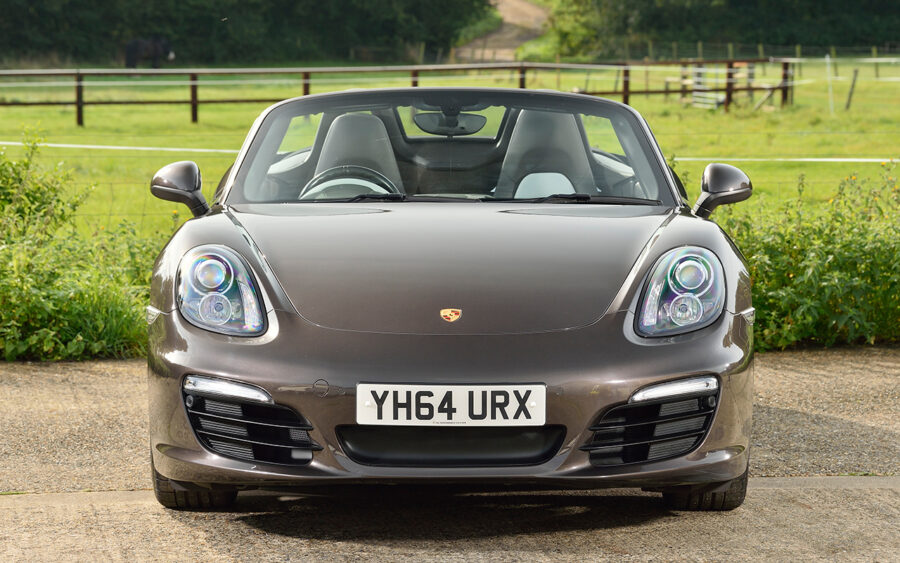
Engine and transmission
“The 2.7-litre 981 Boxster and 3.4-litre 981 Boxster S feature excellent engines,” Chris says. “That said, cam timing solenoid valves can be problematic. There are two on each bank and we recommend replacing them in pairs on a single side, even if only one is at fault. There is no need to replace all four parts unless your 981 registers a problem on each bank, which is unlikely. If you do find yourself faced with the need to replace all four items, budget three hours labour in addition to the cost of parts.” Routine servicing must be observed every 20k miles or at least once a year, even if (as is the case with many Boxsters during lockdown) the car hasn’t covered much ground.
The 2.7-litre engine may be down on power when compared to the S-spec 3.4-litre flat-six (261bhp versus 311bhp), but the difference isn’t as noticeable as most drivers will imagine. That’s not to say you should buy a base 981 if your goal is to secure the last word in performance, but the 2.7-litre 981 features revised pistons, adjusted variable valve timing and updated airflow equipment combining with kerb weight of just 1,377kg (when equipped with a manual gearbox) to deliver a quick car, offering a zero to sixty time of just 5.4 seconds and topping out at a respectable 164mph. Despite smaller displacement, the 981 Boxster is more powerful than the previous generation entry level Boxster (2.9-litres).
“The standard 981 tailpipe is a single outlet,” explains Chris. “If possible, get hold of a Boxster with the optional Sport exhaust, as can be seen on our car.” The upgraded pipework isn’t going to add a stack of ponies to the host Porsche’s power output, but it will sharpen throttle response and activate a racier exhaust note when the centre console’s Sport button is pushed, transforming the character of the 981 Boxster for the better.
Service history from Porsche Centres and independent specialists, such as PIE Performance, is something you should absolutely place at the top of your wish list.
The 2.7-litre 981 Boxster was offered with a six-speed manual gearbox (as per the example on these pages) or a seven-speed PDK semi-automatic dual clutch transmission. It’s of paramount importance the PDK system is treated to fresh lubricant at Porsche’s recommended service intervals (every six years). Check the book pack and service history of the PDK-equipped car you’re looking at to ensure this maintenance has been observed. PDK was a £1,900 option, so expect to pay a premium for cars loaded with the system. Clutches should last at least 60k miles before they need to be replaced, costing upwards of £1,000.
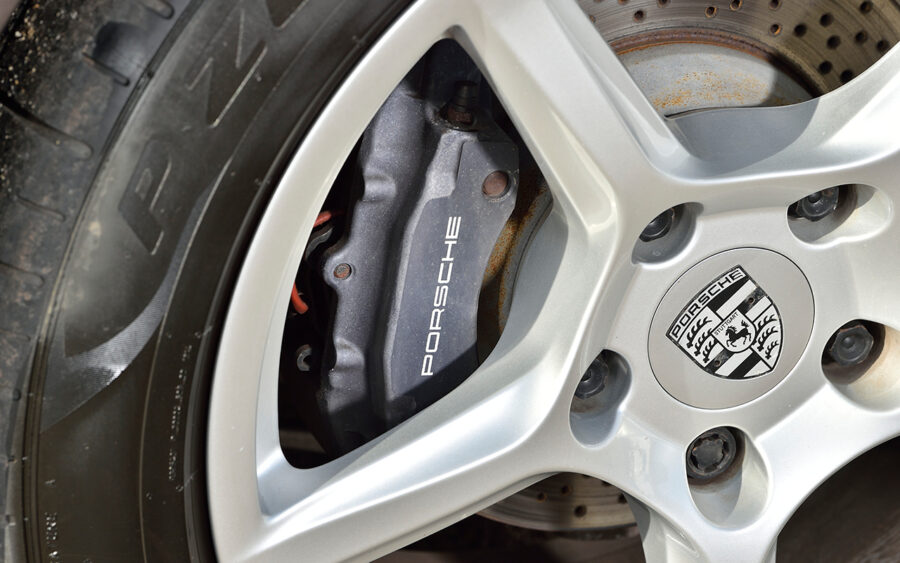
Suspension, steering and brakes
“At the risk of sounding like a stuck record,” laughs Chris, “there really isn’t anything to report as far as 981 suspension and braking equipment is concerned. Brakes are traditional, reliable, quality Porsche parts. For this reason, I wouldn’t recommend using anything other than OEM discs and pads. That said, the inside face of rotors can corrode.” This is a long-standing problem evident since the first-generation Boxster. “Rubber suspension bushes can fail, and we’ve had to change a couple of 981 rear hub assemblies, but beyond usual wear and tear, the 981 has proved itself resilient and reliable in all areas.”
Lockdown has promoted the trend of buying Porsches remotely, often without test driving or even looking at the car in the metal before parting with hard-earned cash. If you’re going to engage in this practice, we strongly advise you to commission PIE Performance or the car’s nearest recognised marque specialist to carry out a thorough pre-purchase inspection.
The resultant documentation will outline the car’s overall condition, but also details of any parts which may need to be replaced in the short term. Only then will you know if the car you’re thinking of buying is correctly priced. For example, parts and labour for renewal of braking components will set you back the best part of £1,000. Make sure the price you pay for the car reflects any additional spend you’re faced with when the object of your desire lands on your driveway.
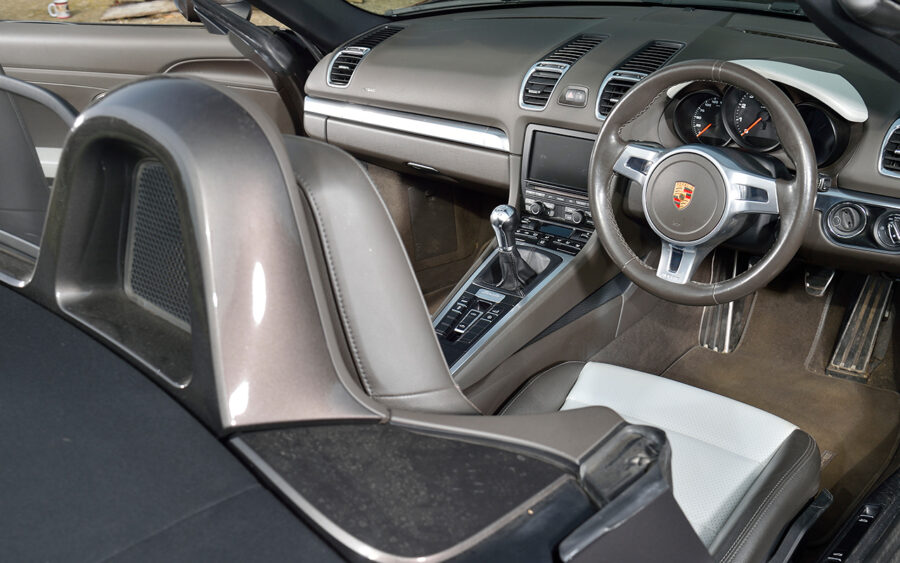
Interior, trim and electrics
The 981’s interior feels completely modern, even today. PIE Performance’s Boxster features attractive twin-tone Cocoa and Umber leather, complementing the chocolate paintwork. “The materials Porsche used for 981 interiors are incredibly robust, but be mindful of possible driver’s seat bolster wear,” Chris warns. “The only real complaint we’ve come across is weak switchgear. More specifically, the electric window switches, door mirror switches and heater control switches become brittle and can snap.
The electrics themselves cause no problems, though dash warning lights suggesting otherwise can be triggered by a battery running low voltage. We’ve received 981s from Porsche Centres incorrectly diagnosing a major fault. They often ask their customers to pay for expensive replacement parts, when the only problem is a duff battery and the need to extinguish fault codes.”
Needless to say, it’s a good idea to keep your 981 connected to a trickle charger, avoiding low battery voltage during rest. Elsewhere, scuttle drains can get blocked over time, especially on a 981 left standing outside for long periods. It’s essential these are regularly cleaned, else rainwater will flood the scuttle pan and litres of water will seep behind the dashboard.
“Damp will play havoc with some of the 981’s electrical systems if the scuttle drains are left unmonitored,” continues Chris. “If fitted, the Porsche Vehicle Tracking System (VTS) is particularly susceptible to error, causing alerts to be sent to Vodafone, the company responsible for monitoring the whereabouts and safety of the car.”
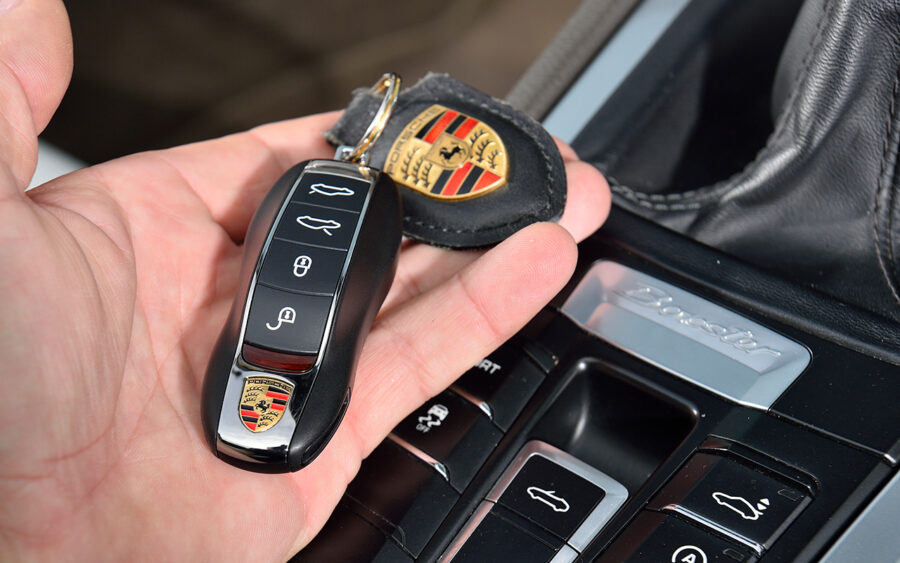
Porsche Boxster (981): our verdict
Unpretentious, simple and effective, the entry-level 981-generation Boxster is all the sports car you really need. It’s not hugely powerful but has enough performance on tap to have fun, while the perfectly balanced chassis and excellent steering combine to inspire confidence and deliver real thrills.
Splitting the difference between early original cars and later four-cylinder Boxsters, the 981 is simple enough to feel like a focused sports car but imbued with enough mod-cons to live with every day. It’s an easy car to recommend over a similarly priced 996-generation 911, especially if you aren’t attached to the idea of a rear-engined Porsche.

